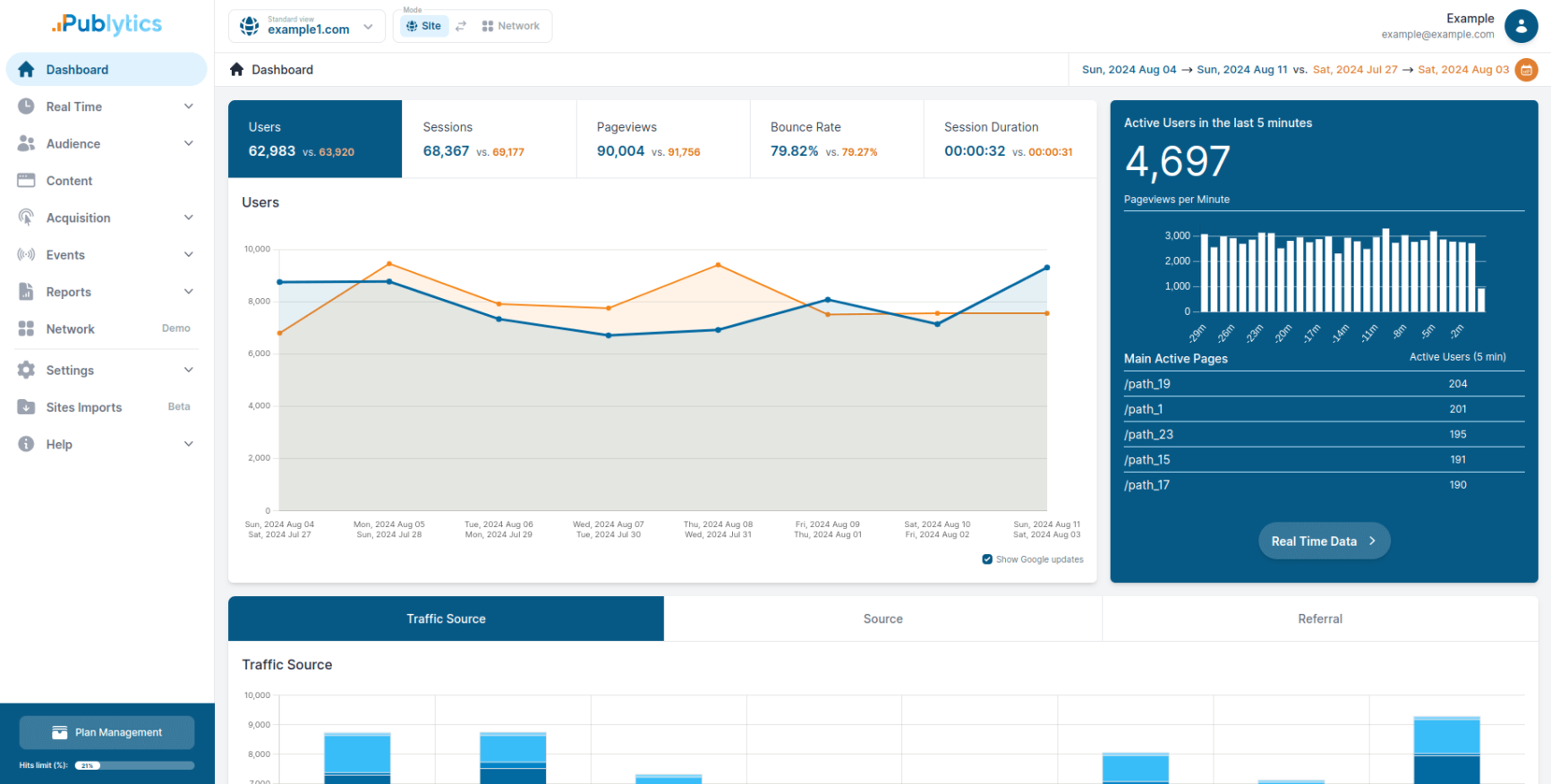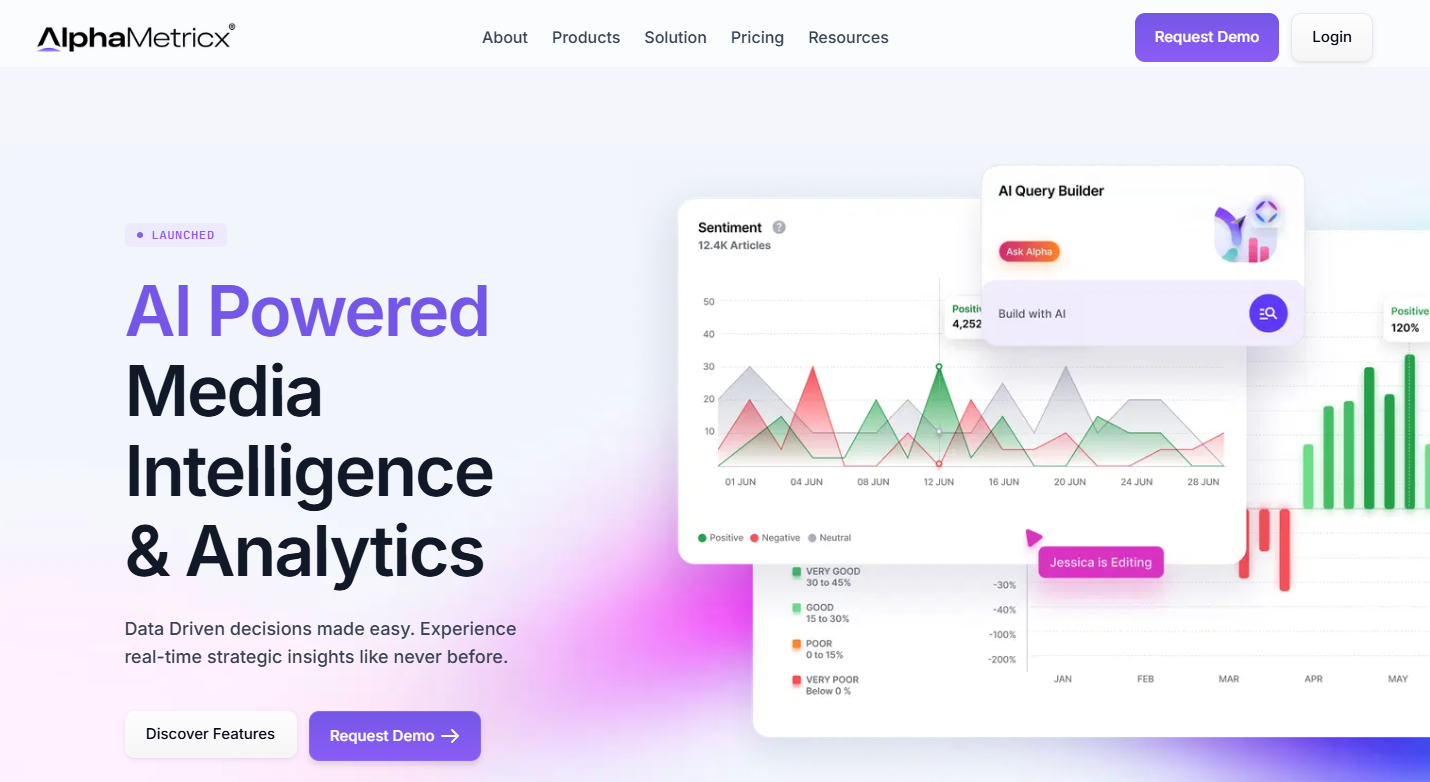Digital publishers manage multiple monetization avenues (subscriptions, programmatic ads, direct ads, commerce) in an effort to maximize their revenues. However, in today’s business scenario, balancing audience and advertiser expectations has become increasingly difficult. Monetization teams are expected to do more with less, and with no shortage of platforms and vendors on the market, many publishers struggle to figure out a content distribution strategy that drives the traffic and revenue needed.
As digital advertising revenues continue to climb, it’s crucial that publishers have a top-notch analytics system as part of their strategy. While marketers keep an eye on spend, managing all this data singularly in different platforms is cumbersome and counterintuitive. Setting up analytics and reporting is always an iterative activity, but starting with a framework can really help speed up the process and get basic things right from the get-go.
In short, a best-in-class monetization analytics set-up helps both publishers and marketers stay on top of things. In this article, we aim to unravel some of the mysteries of monetization and go over some of the best practices to keep in mind when setting up monetization analytics.
Why monetization analytics matter
Data monetization is the process of using data to increase revenue. Many of the highest-performing and fastest-growing companies not only use data monetization but have made it an important part of their strategy.
Good data monetization ensures that businesses optimize their use of data to maximize profits and reduce costs. It can also help streamline decision-making and planning, identify and mitigate risk, and multiply and strengthen revenue streams.
- Some of the other benefits of data monetization include:
- Increases operational productivity and efficiency
- Improves understanding of customers and targeted marketing
- Helps identify new opportunities for growth
- Strengthens competitive advantages
Since several marquee publishers across the globe use Tercep, we’ve had a chance to work closely with the best in the industry in setting up their monetization analytics. Below, we’ve captured some of the best practices to keep in mind when doing so.
The digital publisher’s guide to setting up monetization analytics
1. Completely automate all reporting requirements
Report automation is the process through which digital marketing reports are created and automatically updated using the software. Gathered data is then delivered to all parties concerned on a regular basis via automated emails. Report automation typically works through APIs, removing the need for someone to process the reports because it becomes systemised and automatic by way of a software system.
Why is it important?
-
- Saves time and money.
- Makes reporting more accurate.
- Gives access to deep insights at the click of a button.
- Enhances the accuracy of information.
- Enables faster decision-making.
What all should a publisher automate?
-
- Automate fetching data from the ad-server/s and programmatic partners.
- Automate fetching all the transaction data that the properties generate: on-site commerce, in-app commerce, commerce partnerships, etc.
- Automate dashboards, saved queries and scheduled reports for the user via in-depth dashboards or multi-dimensional pivots.
The average ad-ops person spends 81% of her time aggregating data and preparing reports and only 19% of their time analyzing the data and generating insights. Ideally, the plan should be to bring 81% down to zero.
2. Normalise all the data
Why is it important?
- Maintains consistency in the data across partners.
- Reduces confusions around what every metric or dimension signifies.
- Enhances data accuracy and enables more accurate decision-making.
What all should be normalised?
- Ensure consistent naming convention of every metric, dimension, currency and reporting time zones on every partner.
- Group dimension members meaningfully and create additional custom dimensions to ensure consistency in dimension members across partners. For example, most of our customers get traffic from several geos, but end up grouping countries into meaningful buckets using custom groupings and set up a custom dimension to access these groupings. Similarly, publishers create a custom dimension called Platform where the data is split across Mobile Web, Desktop Web, App, AMP, Others. Another example is grouping their partners into Programmatic/HB/Networks/House/etc.
- If there are multiple properties, group ad-units accordingly so that the team is able to track aggregated data for every property.
3. Combine the data into meaningful tables
Why is it important?
- Enables deep insights from metrics that have never been tracked consistently before.
- Eliminates data silos (worst enemies). Data silos result in partial information that are oftentimes dangerous for decision making.
- Enables end-to-end understanding of user behaviors starting from marketing behavior to on-site/in-app behavior to monetization behavior.
- Helps create surprising efficiencies across functions including strategy, marketing, product and monetization teams.
What are some must-have combined data tables?
- ROI by UTM Source: Track monetization at a user-level to get an end-to-end picture of marketing/acquisition, in-app monetization as well as ad monetization. This helps tie up campaign performance to monetization data, eliminates guesswork and builds profitability.
- PageRPM/ScreenRPM, SessionRPM, Revenue by DAU: Combine analytics data with monetization data to get a deep understanding of monetization by web pages, app screens, user sessions, user activity, etc.
- Header Bidding Discrepancy: Combine data from the ad-server, header-bidding provider and individual header-bidding partners to set up discrepancy tables so that the team is on top of any issues with zero effort.
- Direct campaign performance: Combine data from the ad-server with the buyers’ (brand or agency) ad-server to automatically track the metrics (conversions, post-click page-views, etc.) that matter to the buyer as well as to track discrepancy between clicks and landing-page visits.
- Order management, billing and ad-server reconciliations: Automatically map data from the order management software, billing software and the ad-server to completely eliminate the need for tedious reconciliations.
4. Set up automated alerts
Why is it important?
- Enables peace of mind and saves time that’s otherwise wasted in constant monitoring of metrics.
- Helps catch bugs, inconsistencies and unusual behaviors quickly so that the team can take timely action and minimize damage.
- Helps the team capitalize on trends by comparing daily and weekly numbers and taking action early.
What are some best practices for alerts?
- When setting up alerts, the primary focus has to be on ratio metrics. Absolute metrics like Impressions, Ad-Requests, Revenue, Clicks, etc. can fluctuate quite significantly. But, ratio metrics should remain steady.
- Some key metrics on Google Ad Manager that need alerts are CPM, Fill Rate, Render Rate, Delivery Rate, Viewability and Ad-Request CPM. Use these with Key dimensions like partner, platform, geo, ad-unit, pricing rules and buyers to get a complete picture.
- Set up hourly alerts for extremely critical metrics. Define severity based on the metric and extent of drop/deviation.
- Ensure that alerts are delivered to the most-used communication channels in the team: Slack, SMS, and Email.
Content from our partners
5. Create a simple dashboard and alerts setup for the direct sales team
Why is it important?
- Direct sales teams often work with insufficient information.
- A better understanding of buyer (brands and agencies) behavior will dramatically increase their chances of closing a deal and get better deal terms. It also empowers them to negotiate better.
- Timing is everything when striking a deal. Being able to act on an opportunity promptly when favorable conditions exist can make all the difference in closure rate.
What are some must-have setups for direct sales teams?
- Track Revenue and CPM by date by Brand, Advertiser, Buyer Network and Bidder/DSP for top 5 programmatic partners individually as well as aggregate. Slice the data by geo, platform and ad-units (if necessary).
- Some key metrics on Google Ad Manager that need alerts are CPM, Fill Rate, Render Rate, Delivery Rate, Viewability and Ad-Request CPM.
- Setup a dashboard with this data that is automatically populated daily (or hourly when available).
- Setup alerts for any change in Spend or CPM by each of the above.

6. Establish spend to revenue visibility or Revenue Attribution
Revenue Attribution is the tracking, connecting, and crediting of marketing efforts to their downstream revenue generation. The process requires a number of steps but provides significant insights into what marketing campaigns and initiatives did or did not work and to what degree.
Why is it important?
-
- Revenue Attribution gives your marketing team better visibility into campaign performance and helps businesses better allocate marketing dollars to the marketing that customers respond to.
- Helps you to focus on platforms where ROI is better and where one should change their approach.
- Combining Hourly data with Attribution data can help the team make faster decisions and get the most out of the budget in hand.
What situations beg for this?
-
- Important metrics like Spend CPC can be tallied against Customer Acquisition Cost to understand the effectiveness of a campaign. For example, if you are running a blog marketing on multiple domains, to have a single table showing these metrics along with GA data can be fantastic to understand which domain is attracting better customers.
- One use-case by our customer was attributing push notifications to ad revenue. This helps them to understand what topics attract users back to their page and increases ad revenue at the same time.
The Final Word
Every publisher faces these analytics set up issues down the line of business and we have seen that keeping data in order helps them in going a long way ahead. Also, not every publisher faces the same issue, hence creating a problem statement and finding a robust solution to solve the issue should be the way to go.
Using an analytical platform that caters to a publisher’s specific needs can be helpful in eliminating multiple points of error and ultimately growing business!
Disclaimer: The author of this post is affiliated with Tercep, with examples provided from real demo dashboards.
















